The New GeForce GTX 980 & 970
Note that this is an archived copy of the original article. Please see here for a more detailed explanation.
By Andrew Burnes on Thu, Sep 18 2014
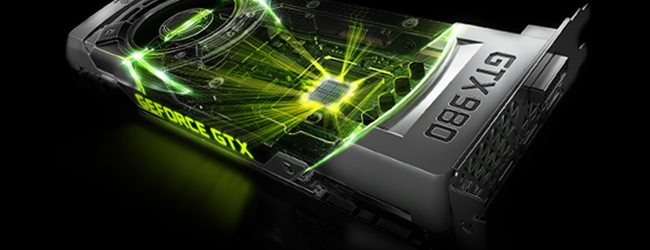
To a packed crowd in Los Angeles, and a global audience watching on the Game24 livestream, NVIDIA CEO Jen-Hsun Huang revealed our latest GPU architecture: Maxwell. Setting a new standard for PC gaming with innovative new technologies that accelerate performance, increase image quality, and give you new ways to play, Maxwell's cutting edge technology is brought to life in two brand new GPUs: the GeForce GTX 980 and the GeForce GTX 970.
The GeForce GTX 980 is our fastest and most efficient GPU. Faster framerates, new rendering techniques and superior image quality combine to deliver next-generation game experiences at Ultra HD resolutions and on Virtual Reality headsets.
Enter the next-generation of PC gaming, now.
New Thinking, New Experiences, Better Performance
The new Maxwell architecture is a major leap in GPU engineering, bringing new ideas to the table that will enhance and improve your experiences in meaningful, impactful ways. For this to occur, every element of Maxwell has been fine-tuned to perfection, and every decision carefully considered to give PC gamers the maximum benefit.
While great strides have been made in rendering emotion, hair, geometric detail, and many other gaming features in recent years, realistic lighting remains one of the most challenging problems faced in real-time graphics. Many games look excellent, but because systems and platforms have lacked the necessary rendering power, most features are simulated or faked. With Maxwell, GPUs now have the horsepower to dynamically render indirect light for the first time, using NVIDIA's VXGI (Voxel Global Illumination) technology.
With this technological leap in real-time illumination, we have been able to recreate the famous moon landing video, revealing why the lighting in those 45 year-old pictures looked 'wrong' to conspiracy theorists. In games, VXGI enables lighting far beyond the realms of what is currently possible, greatly improving realism. True shadows, real ambient occlusion and fully dynamic, highly detailed reflections are just a few of the effects that are enabled by VXGI. Currently, this tech is being built for popular game engines like Unreal Engine 4, and will be available for game developers by the end of the year.
To enhance games further we've developed Dynamic Super Resolution (DSR), which gives gamers 4k-quality graphics on a 1080p or higher monitor.
To achieve this, Maxwell renders the game at 3840x2160 at a hardware level, before filtering the image to 1920x1080 and showing it on your monitor. Compared to traditional downsampling, which requires compatible monitors, luck, and a high degree of technical knowledge, DSR produces a higher-quality image that can be instantly enabled with a single click in GeForce Experience, or by changing the resolution in-game.
DSR can enable a wide range of resolutions, and its benefits can be applied to all monitors, even those that are not 1920x1080.
DSR's superior results come courtesy of a custom-made 13-tap Gaussian filter that reduces or eliminates the aliasing artifacts experienced with traditional Downsampling, which relies on a basic box filter. The final image is significantly more detailed and has lower levels of aliasing, which can be further minimized by enabling in-game anti-aliasing options or NVIDIA Control Panel anti-aliasing overrides.
With the launch of Maxwell, we are also introducing the world to Multi-Frame Sampled Anti-Aliasing (MFAA). This new, Maxwell-exclusive anti-aliasing technique improves edge quality with a minimal performance cost.
MFAA's image quality and performance improvements make it the perfect solution for high-resolution gaming experiences, where every frame counts. On average, MFAA can deliver similar edge quality to MSAA with 30% faster frame rates.
DirectX 10 and DirectX 11 introduced gamers to tessellation, which features heavily in many PC games, increasing the quality of characters, game worlds, objects, and much, much more. On NVIDIA GPUs, tessellation processing is handled by the Polymorph Engine, and with Maxwell we've upgraded its hardware to version 3.0.
In games, GeForce GTX 980's upgraded engine powers through tessellation tasks and is up to 3x faster than GeForce GTX 680 at high tessellation factors, as seen in games like Metro: Last Light Redux.
Similarly, our engineers have revamped Maxwell's ROP subsystem, which is primarily tasked with anti-aliasing calculations. Tweaks, new ideas, and support for new color compression algorithms increase the rendering speed of MSAA and TXAA to improve framerates, and further changes boost the efficiency and effective speed of our record-leading 7.0 Gbps VRAM.
Maxwell’s technological enhancements have also bolstered the speed of the H.264 encoder used for GeForce Experience’s critically-acclaimed ShadowPlay gameplay recorder. Such is the speed of this upgraded chip, that GeForce Experience users with a Maxwell GPU can now record gameplay at up to 3840x2160, at 60FPS, with a maximum bitrate of up to 130 mbps.

For more information about GeForce Experience, ShadowPlay, DSR, and 4K recording, please head on over to our dedicated GeForce Experience 2.1.2 launch article.
Maxwell GPUs also ship with an enhanced NVENC encoder that adds support for H.265 encoding. Compared to H.264, H.265 compression offers significant bandwidth savings at the same quality level, which will help enable the next generation of streamed gaming experiences within the home or over the cloud.
Power Efficient & Supremely Powerful
NVIDIA has been laser-focused on efficiency, improving the speed of existing components, and reducing power requirements to enable even greater performance (power creates heat, which limits performance). With Maxwell, every nanometer of silicon has been reviewed and tweaked, and every supporting component optimized, replaced, or revamped. The result is the world's fastest, most power-efficient GPU, the GeForce GTX 980.
As discussed, Maxwell architecture is at the heart of the GeForce GTX 980, and from its inception it was designed to deliver extraordinary leaps in power efficiency and performance, whilst simultaneously reducing power consumption. With a combination of advances originally developed for Tegra K1, new architectural approaches first seen in the GeForce GTX 750 Ti, and further refinements designed for GeForce GTX 980's GM204 GPU, Maxwell now delivers twice the performance per watt compared to Kepler-architecture GPUs, such as the GeForce GTX 680.
For gamers building new PCs, this unprecedented power-performance efficiency enables easier GPU upgrades, the use of affordable 500W power supplies, and reduces the need for supplementary cooling, which makes the GeForce GTX 980 perfect for use in Mini ITX cases, which are ideal for LAN parties, HTPC, or other social gatherings.
New, Better Ways To Play
In recent years exciting new screen technologies have come to the fore, finally enabling us to move past our limiting 1920x1080 displays. Of those technologies, 4K (3840x2160) is poised to have the biggest impact thanks to its use in TV, films, and games, and in 2015 it is expected to explode in popularity when panel prices drop to affordable levels.
For gamers, 4K combined with NVIDIA's G-SYNC technology is the Holy Grail, delivering Ultra HD tear-free, super-smooth gameplay. The computing demands of 4K are high, however, requiring top-tier multi-GPU systems, until now that is. With Maxwell and the GeForce GTX 980, 4K G-SYNC is a reality thanks to Maxwell's technological innovations, its speed, and its 4GB of VRAM.

In addition, Maxwell is the world's first GPU architecture to support HDMI 2.0, providing enough bandwidth to output 4K at 60Hz over HDMI. And beyond 4K, Maxwell can output simultaneously to multiple ultra HD-resolution screens. For gamers, that means three 4K G-SYNC panels in a Surround configuration, commonly referred to as 12K, and a forth HDMI-powered screen for watching Twitch.
4K is a paradigm shift in fidelity, but ultimately it is an upgrade of an existing experience, albeit a fantastic one. Virtual Reality (VR), in contrast, is a whole new way to enjoy games, putting players into the game with a pair of hi-tech, head and movement tracking goggles. If you've yet to personally experience VR it's impossible to explain just how revolutionary an advancement it is, but once you do you'll want to play as many of your games in VR as is possible.
Today, our understanding of the human brain allows us to better craft VR experiences, display technology is fantastic, and game graphics approach photorealism. This confluence of events has led to the reemergence of Virtual Reality technology, which previously crashed out of the market in the early 90s when technological deficiencies resulted in side-effects such as latency-induced nausea.
Since this reemergence, NVIDIA has worked closely with VR firms to improve the experience, greatly reducing latency with a raft of exclusive innovations, in addition to developing all-new technologies that further improve VR gameplay.
In addition to latency reduction, the other requirement for immersive VR experiences is high framerates. At present, 75 frames per second, per eye, at 960x1080 is desired for fluid gameplay, and in the consumer version of Oculus Rift that is expected to raise to 90 frames per second, per eye, at even higher resolutions. Achieving this level of performance is akin to rendering at 4K, making the GeForce GTX 980 the recommended card for VR.
However, to ensure the ultimate experience with rock solid framerates, which is crucial for avoiding eye strain and jarring frame drops, a fast SLI configuration is recommended. In traditional games SLI doubles performance, letting you play at higher resolutions and with more eye candy. In VR games, SLI rendering introduces a frame of latency, which is the antithesis of our work mentioned earlier. To avoid this frame of latency we have developed "VR SLI", which has each GPU output to a separate eye in a VR headset. This allows games to fully utilize both GPUs in parallel, and increase delivered frame rates.
Before VR there were a number of 3D technologies, such as our own 3D Vision. Fundamentally, the rendering technologies of 3D Vision and VR are extremely similar: 2 slightly different images displayed in such a way to create a 3D dimensional effect. Realizing this, we have developed Auto Stereo, which will convert 3D Vision-compatible games into VR experiences, with mouse and keyboard commands mapped to VR inputs like head movement, similar to Gamepad Mapper on NVIDIA SHIELD devices, which maps touch and motion inputs to physical controls. Auto Stereo will be delivered automatically through GeForce Experience.
Finally, we will leverage Voxel Global Illumination (VXGI), Dynamic Super Resolution (DSR), and Multi-Frame Sampled Anti-Aliasing (MFAA) to increase image quality and performance in compatible games. VXGI-enabled games will be significantly more immersive and realistic in VR, DSR will enable higher fidelity of games on VR displays, further improving immersion and realism, and MFAA will improve anti-aliasing whilst simultaneously improving performance, which as discussed is crucial for VR.
Together, these many VR features make Maxwell GPUs such as the GeForce GTX 980 the best option for VR enthusiasts who want the definitive VR experience, free from latency and nausea-inducing artifacts, and with unprecedented image quality.
With a Maxwell GPU, NVIDIA delivers a VR solution second to none.
Performance & Specifications
Maxwell is a radical architecture with little correlation to previous generations. Efficiency improvements see components making more calculations per second, yet utilizing less power, enabling even greater speeds and better overall performance. These optimizations result in the most efficient GPU architecture ever made, that is also the fastest and most advanced.
Put through its paces in some of the most demanding games available, the GeForce GTX 980 running at reference speeds pushes a considerable number of pixels.
At 2560x1600, with maximum game settings and anti-aliasing options set to some of the highest levels available, Maxwell's raft of technological and efficiency improvements accelerate framerates, giving the GeForce GTX 980 an advantage of up to 84% against the GeForce GTX 680 in our suite of benchmarks.
The new GeForce GTX 970 is no slouch, either, powering the latest and greatest games at ultra detail levels and with maximum levels of anti-aliasing enabled:
The World's Most Advanced GPU Has Arrived
Maxwell ushers in a new era of performance, efficiency, and innovation that improves your experience in previously unseen ways. From VXGI to DSR, to MFAA and VR, Maxwell enhances every facet of gaming, accelerating performance, improving image quality, and reducing latency in next-generation Virtual Reality experiences.
With blistering speed, the Maxwell-powered GeForce GTX 980 is also the world's fastest single-GPU graphics card, and in SLI configurations no game available today can pose a problem, even at 4K Ultra HD resolutions.
If you want the best experience, the fastest speeds, DirectX 12 support, and image quality-enhancing features that just work, the new GeForce GTX 980 and GeForce GTX 970 are your best options. Pick up your very own GeForce GTX 980 for $549 MSRP from your favorite e-tailer or retailer starting Friday, September 19th, or the GeForce GTX 970, which starts at $329 MSRP.
 Previous
Previous
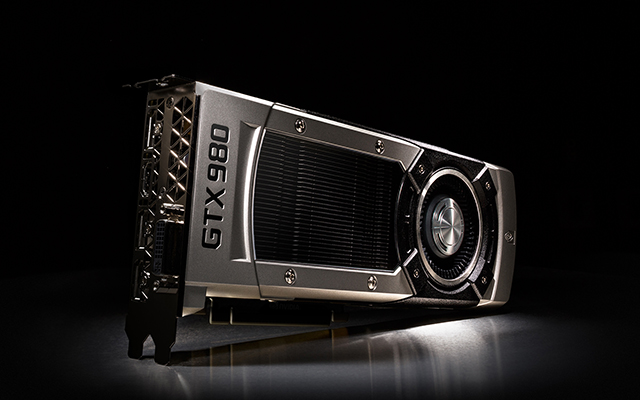
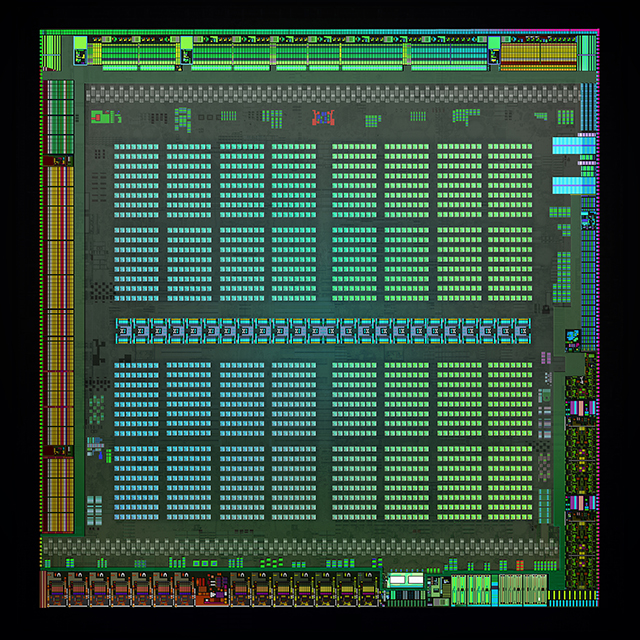
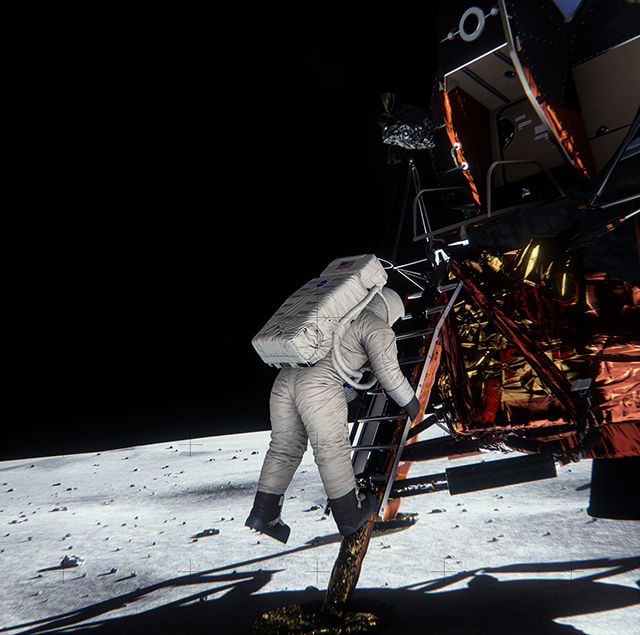
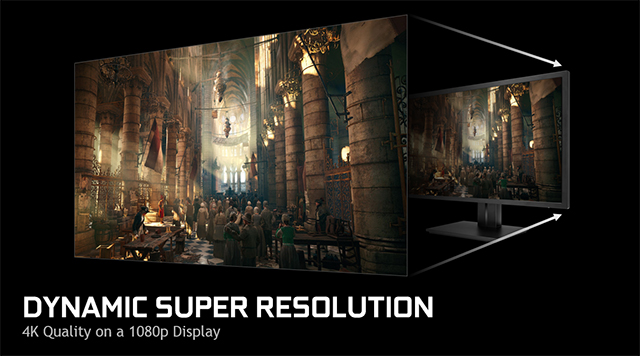
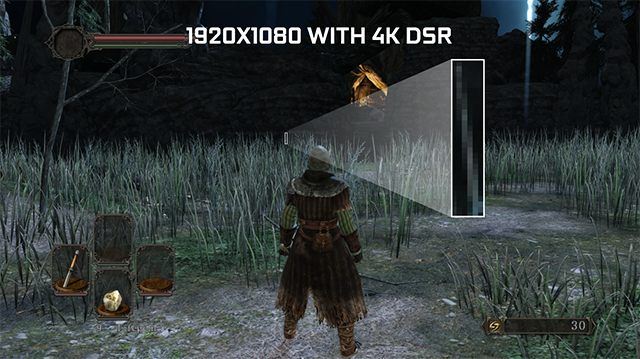
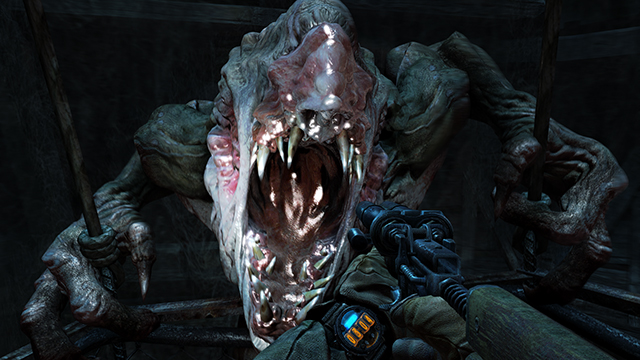
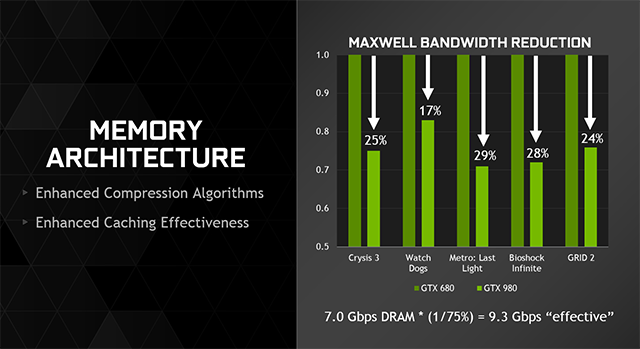







Comments
This comment section is currently disabled. Click here to enable comments and load all Disqus related resources
Please note that by enabling and loading these Disqus resources, you are agreeing to allow everything that comes with a Disqus comment section, including their cookies and all scripting.
This comment section is currently enabled. Click here to disable comments and unload all Disqus related resources
Please note that I have absolutely zero control over this comment section. It is still administered entirely by Nvidia themselves. I have no moderation power whatsoever and don't necessarily endorse any of the comments posted here. In fact, I don't believe this comment section adds much value to the article to begin with but included it only because it existed on the original.